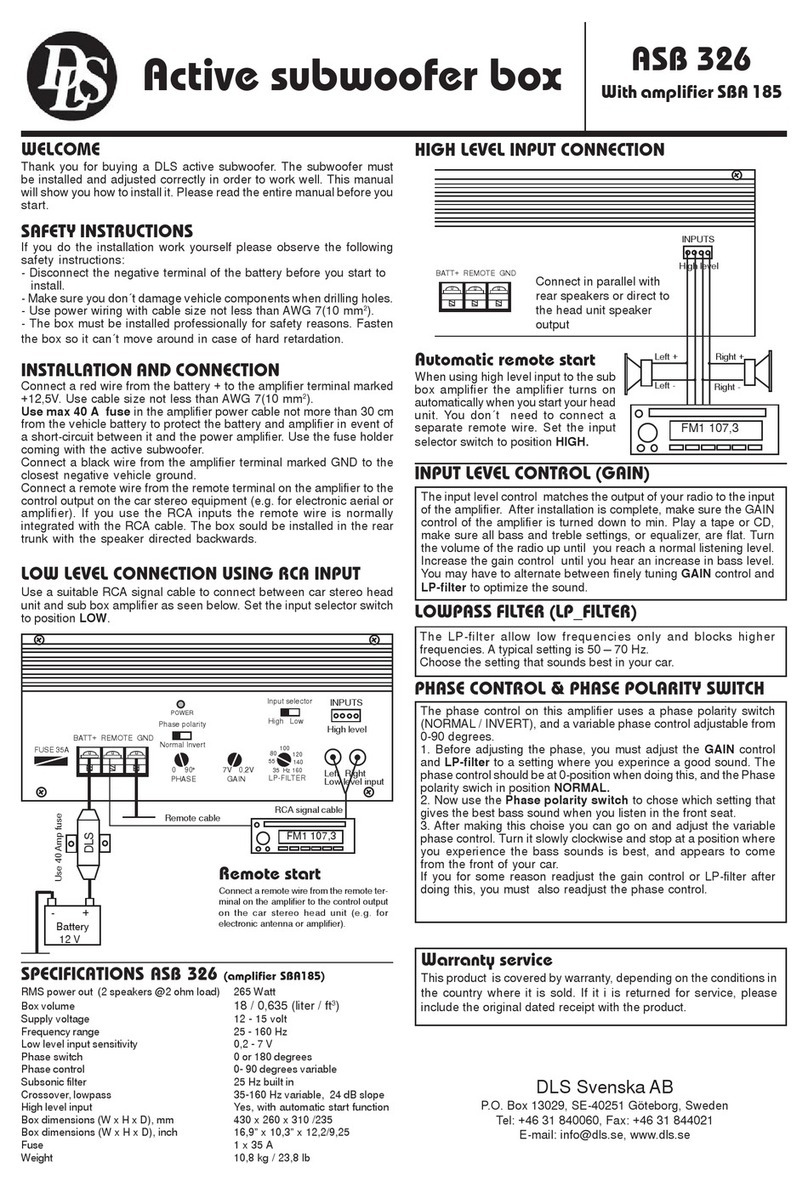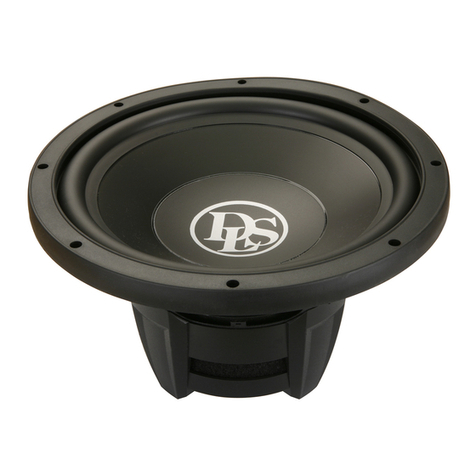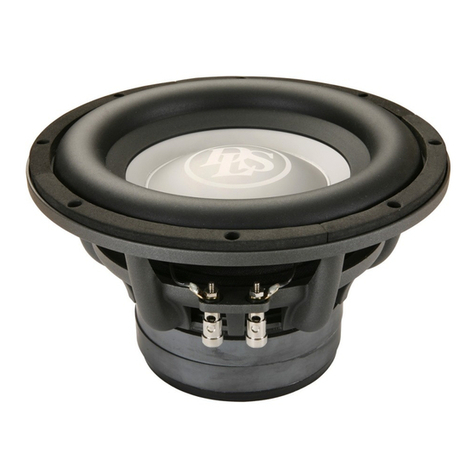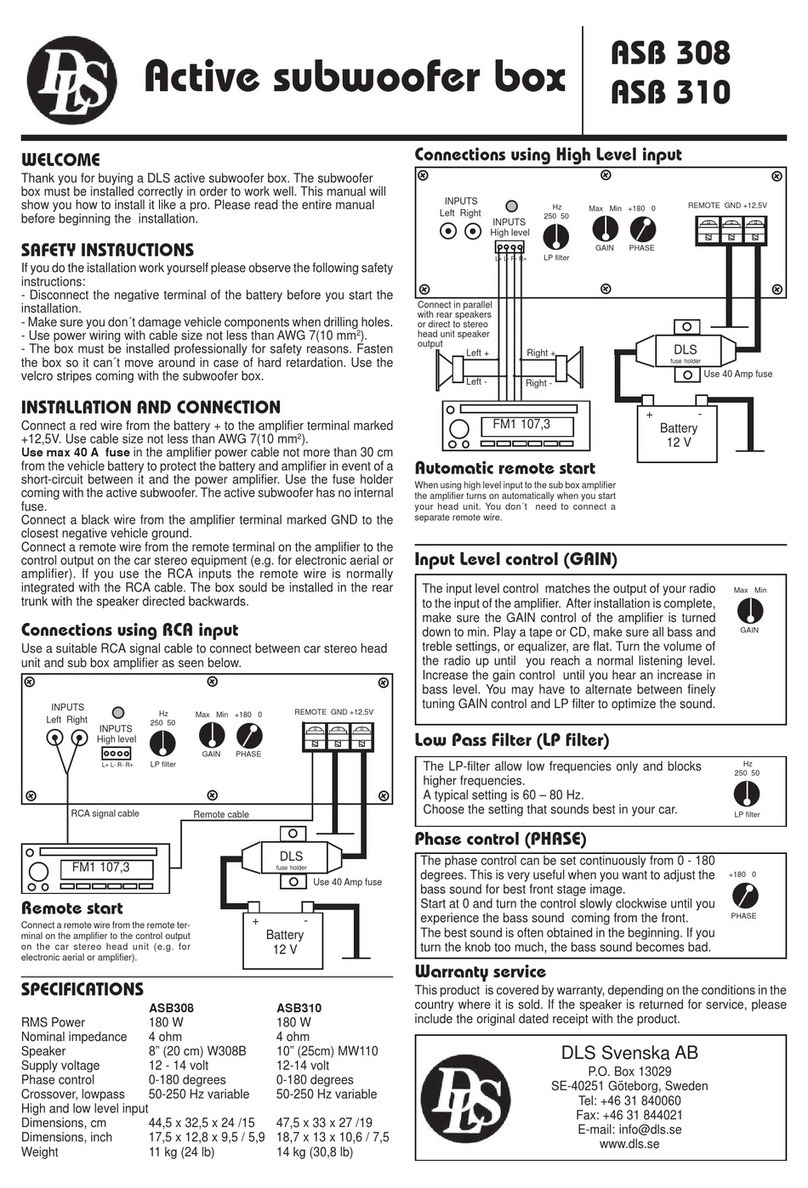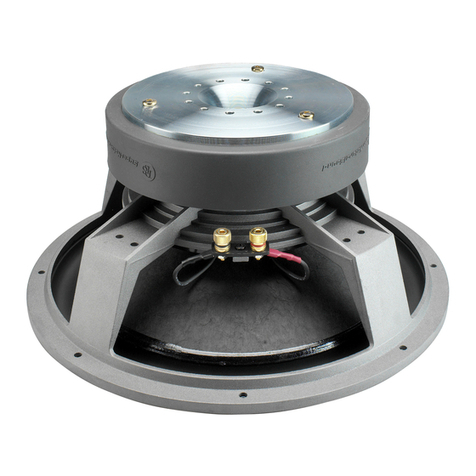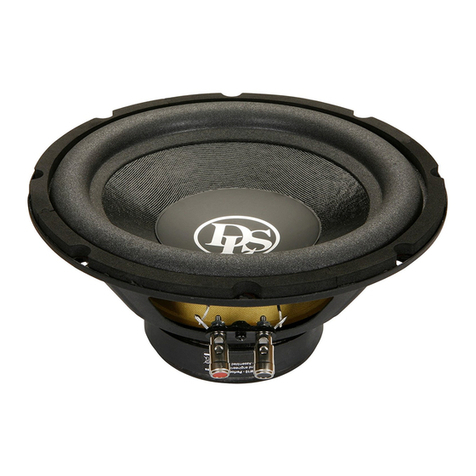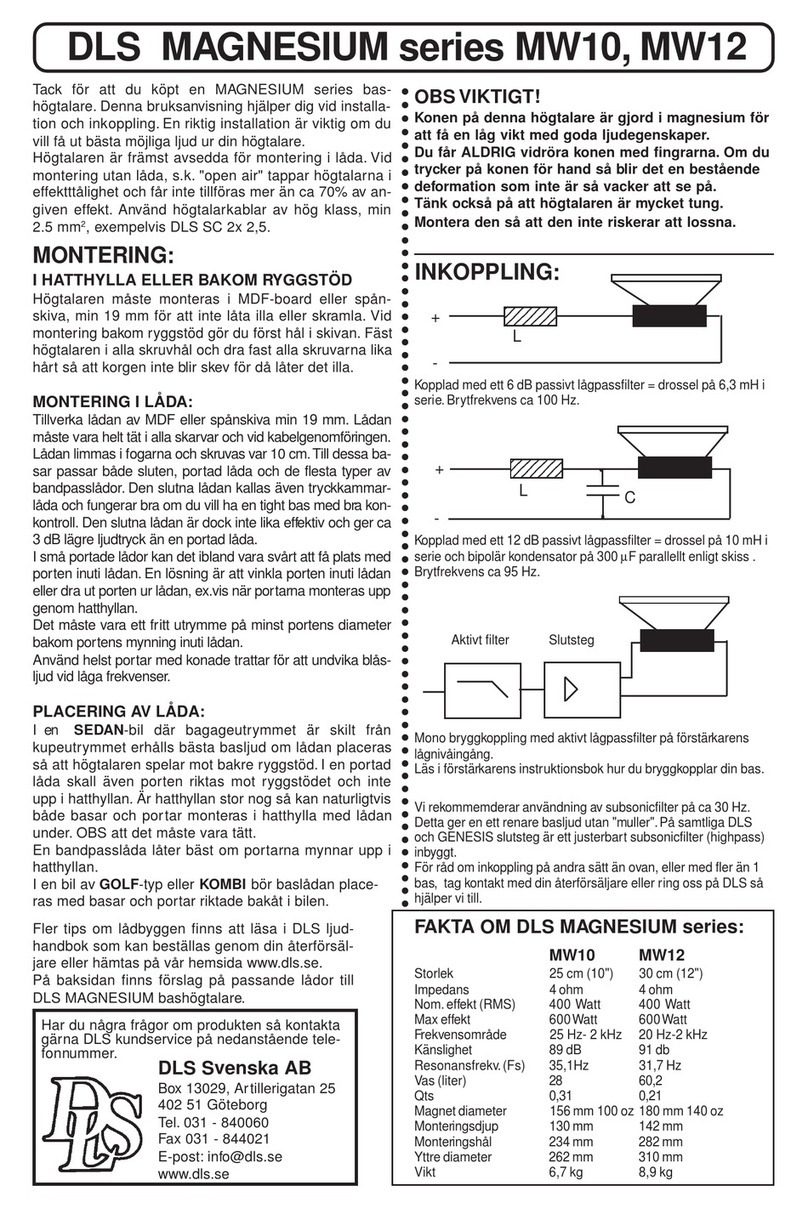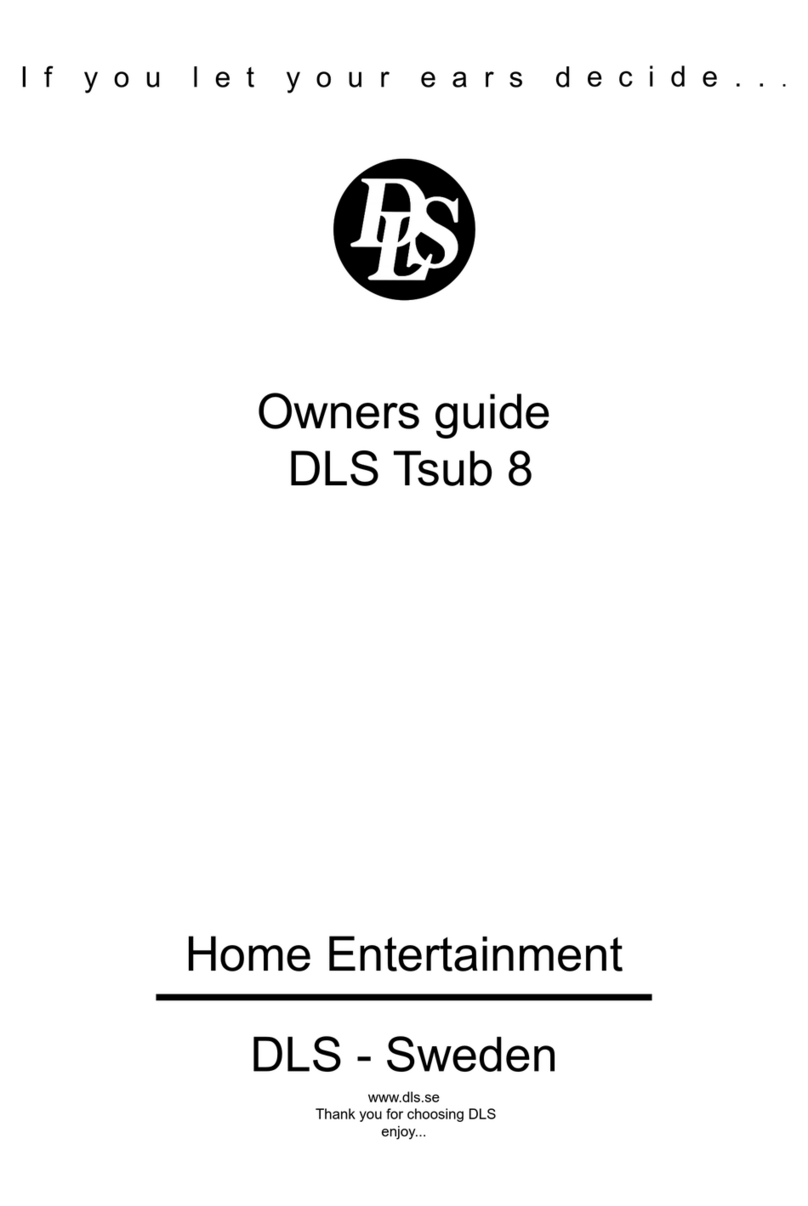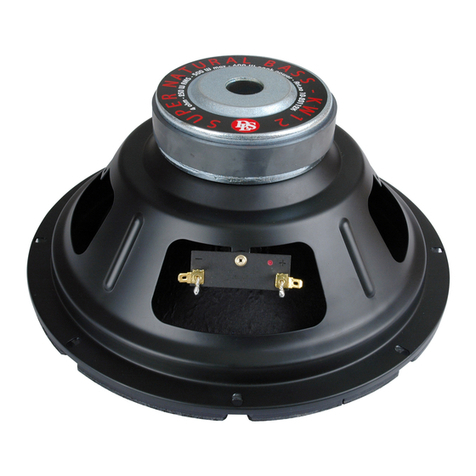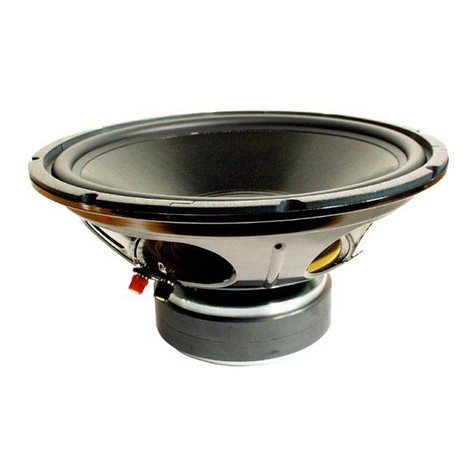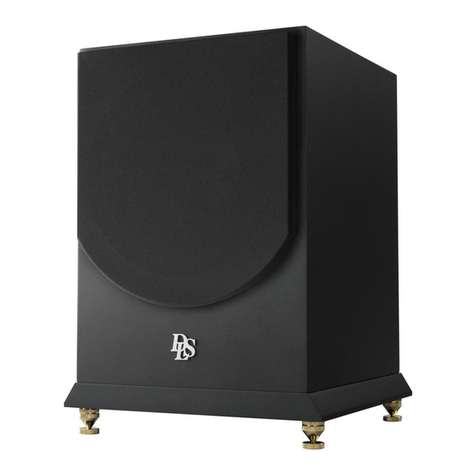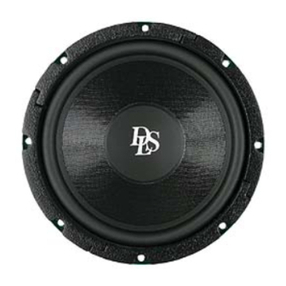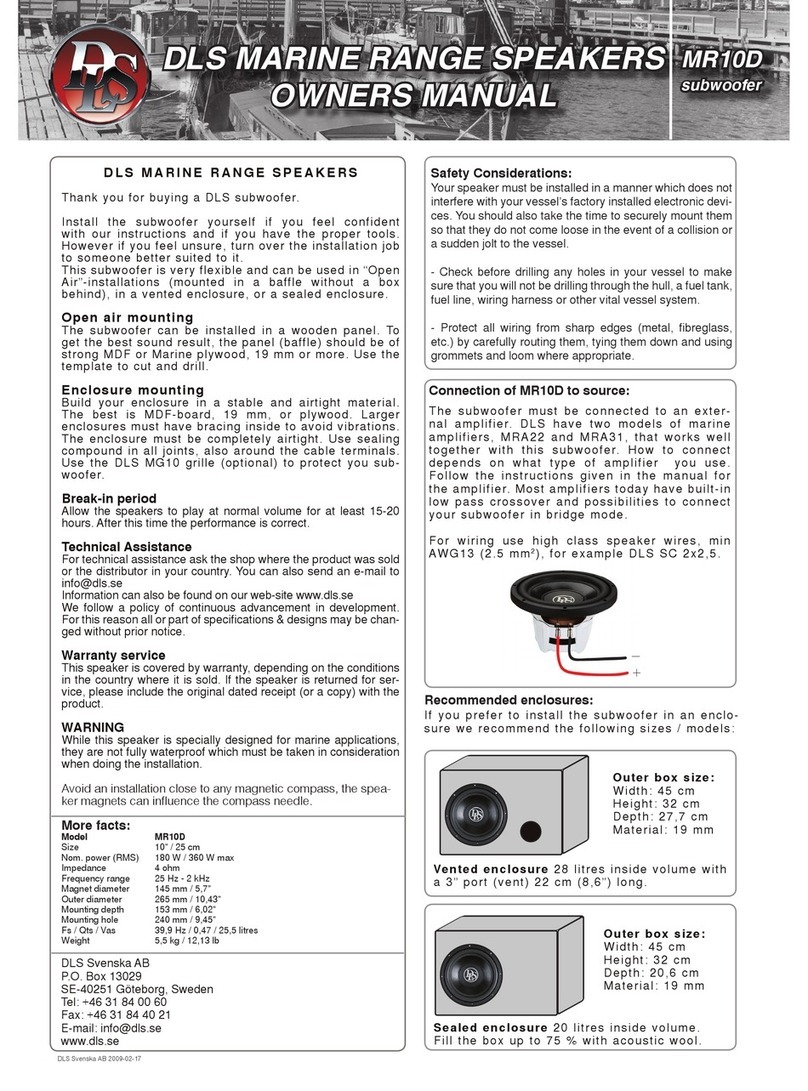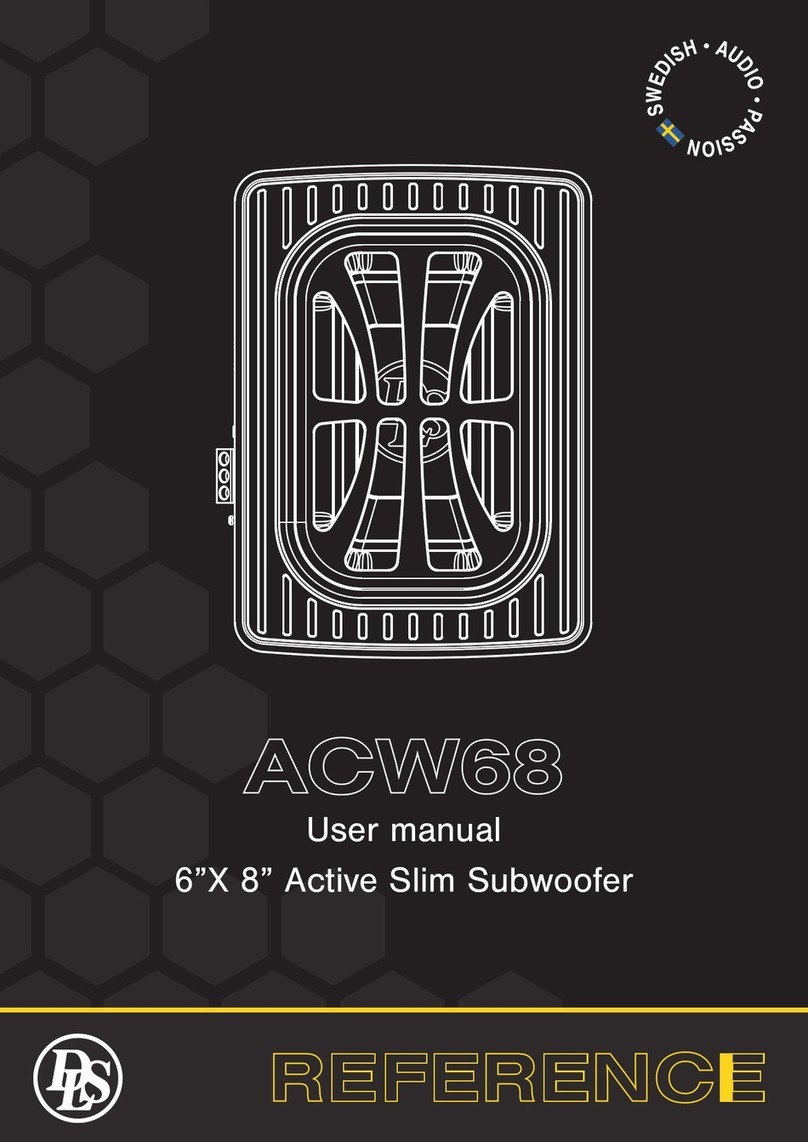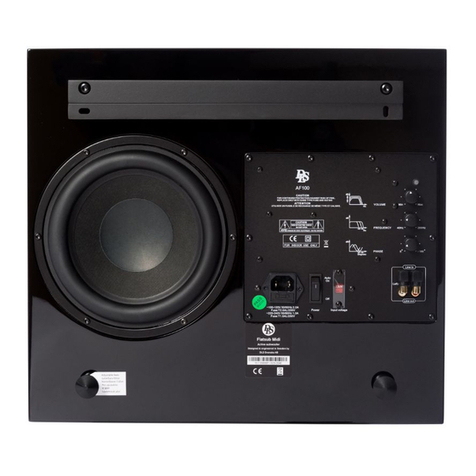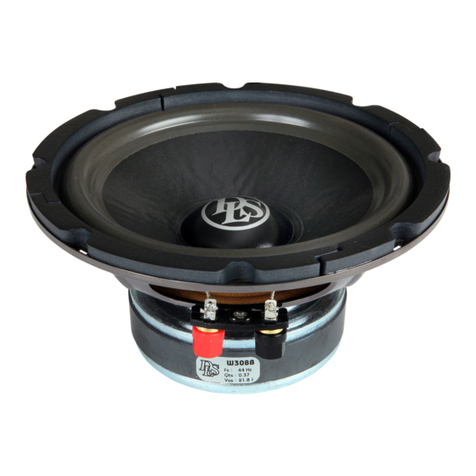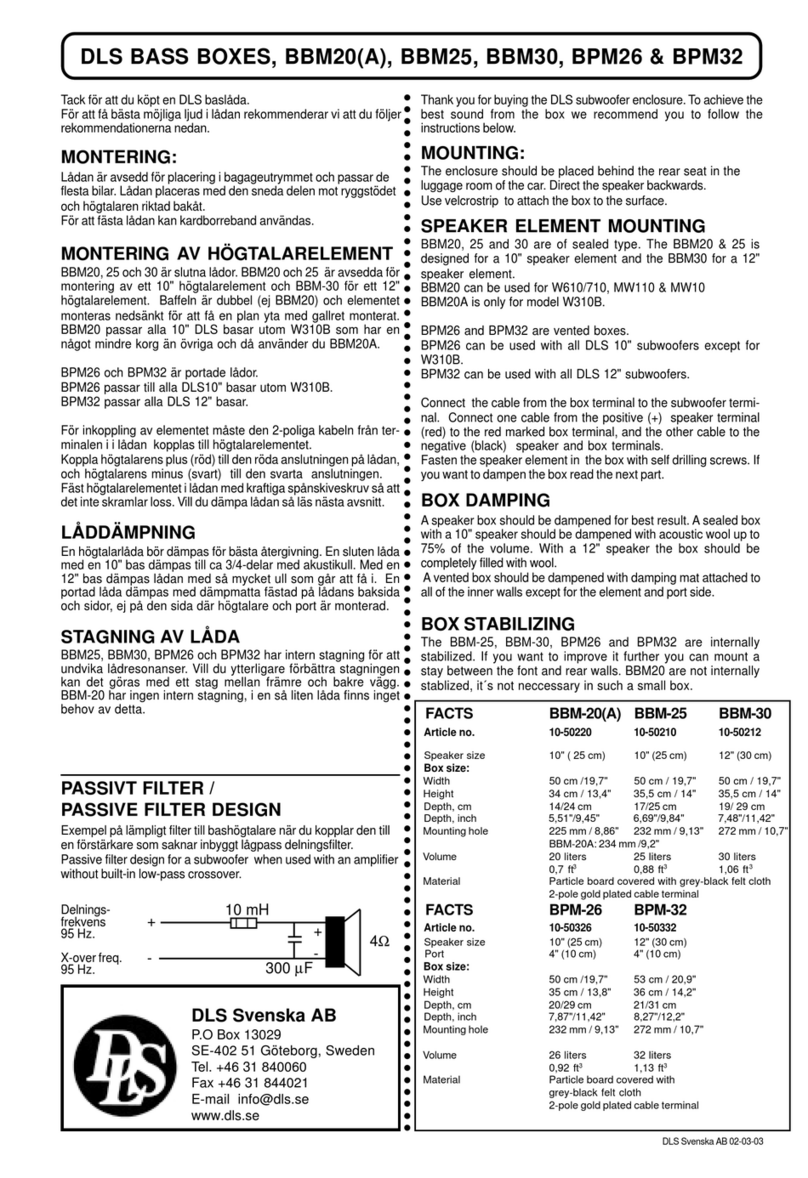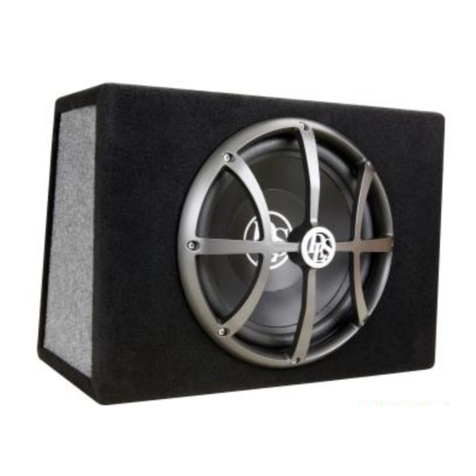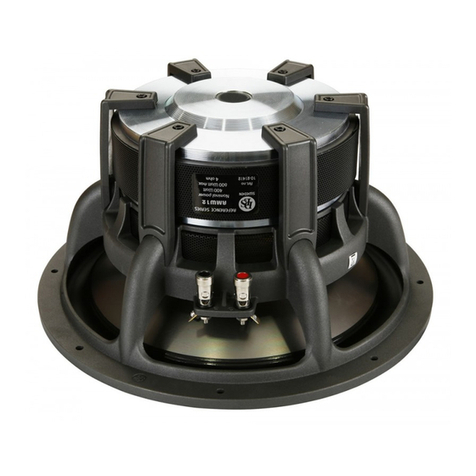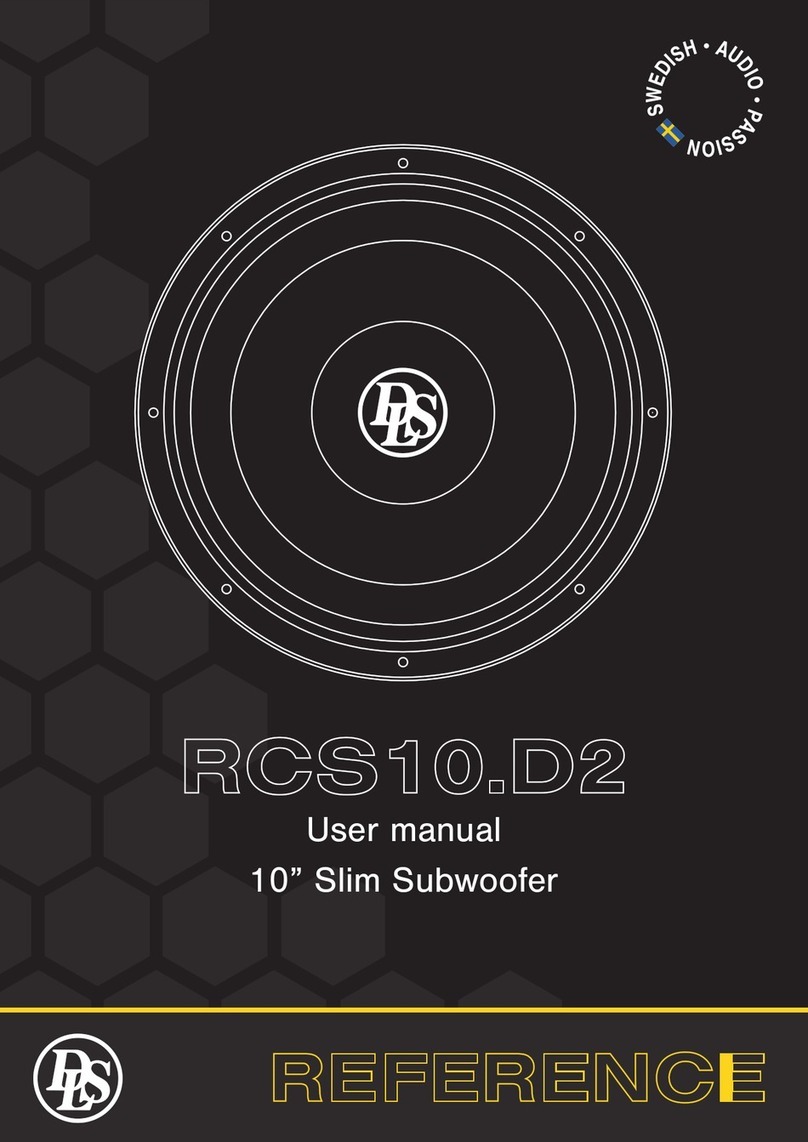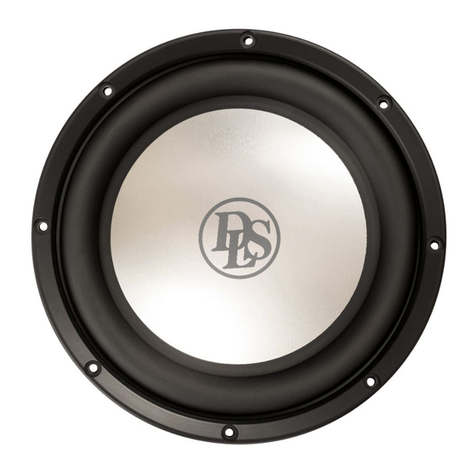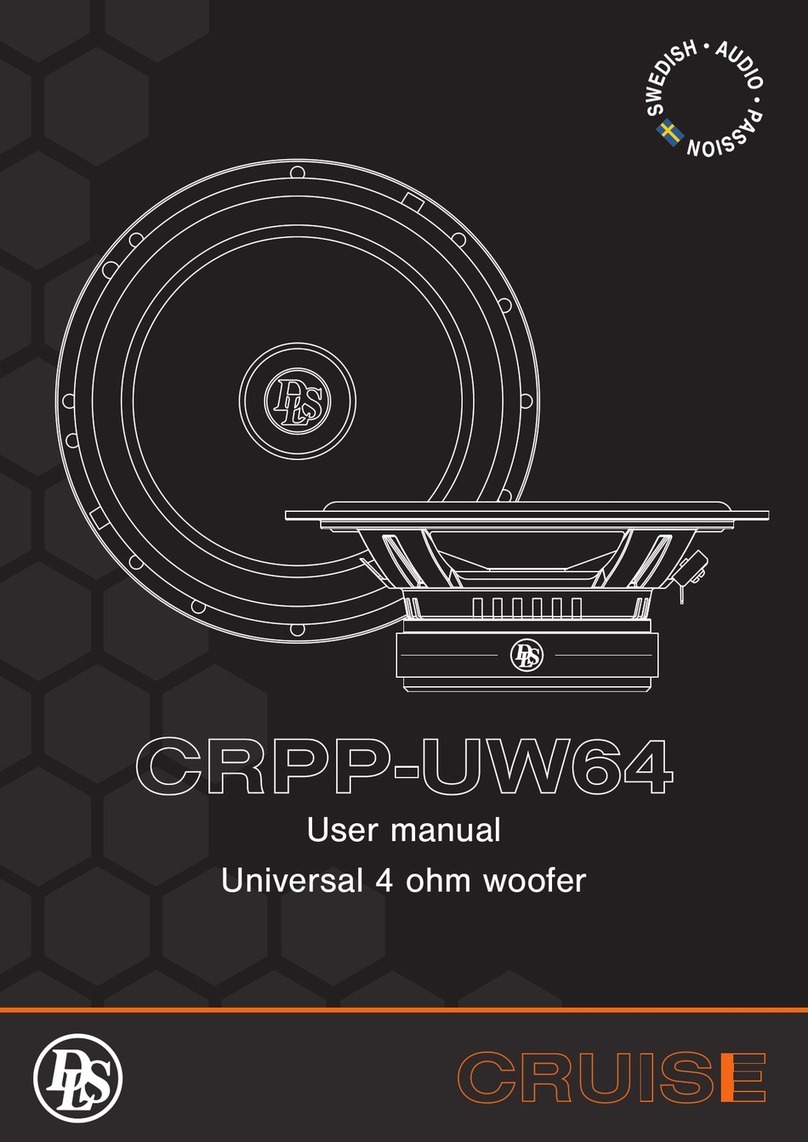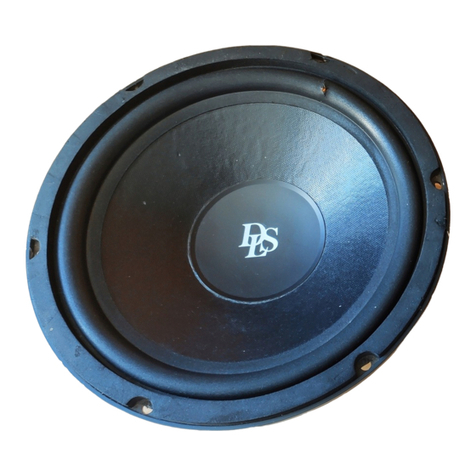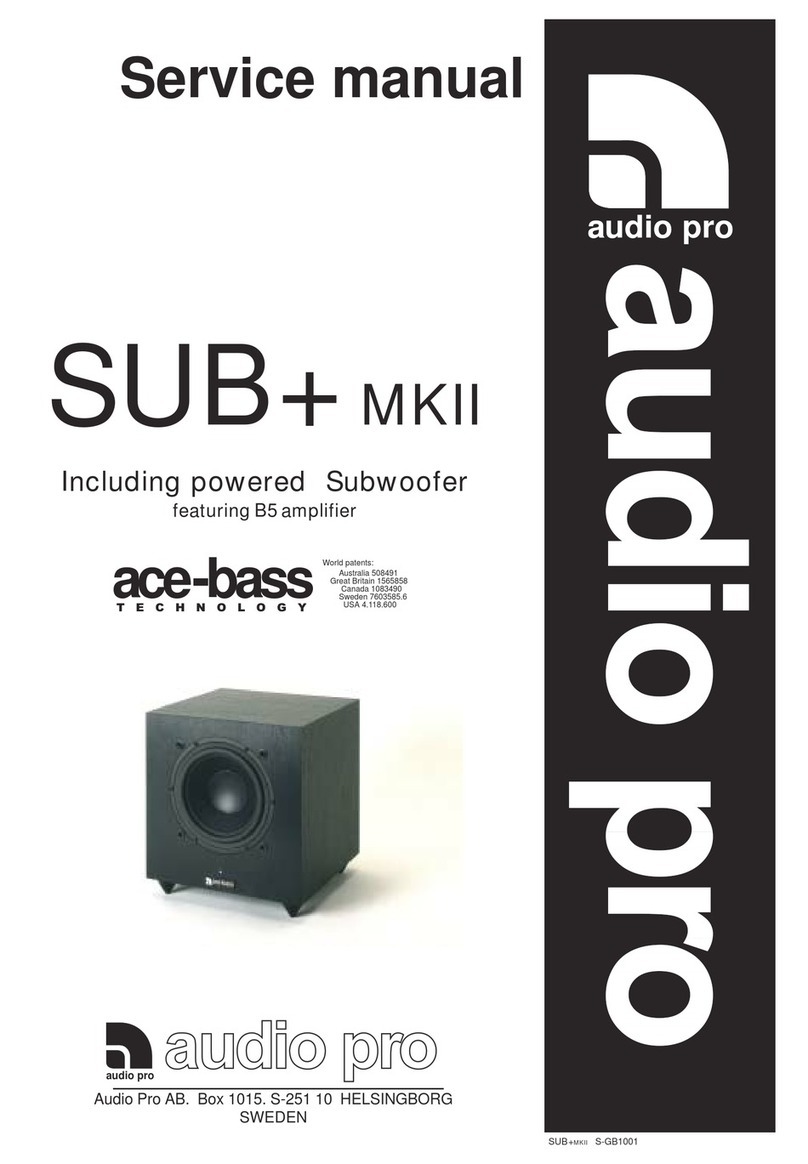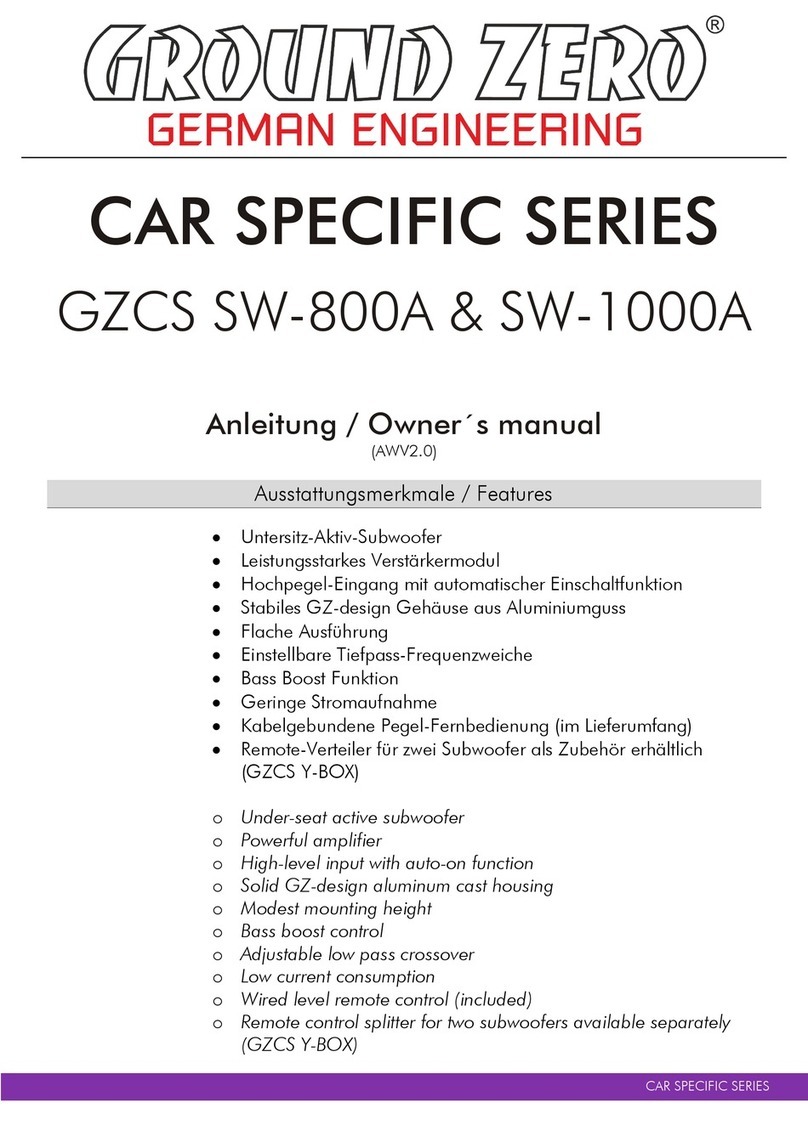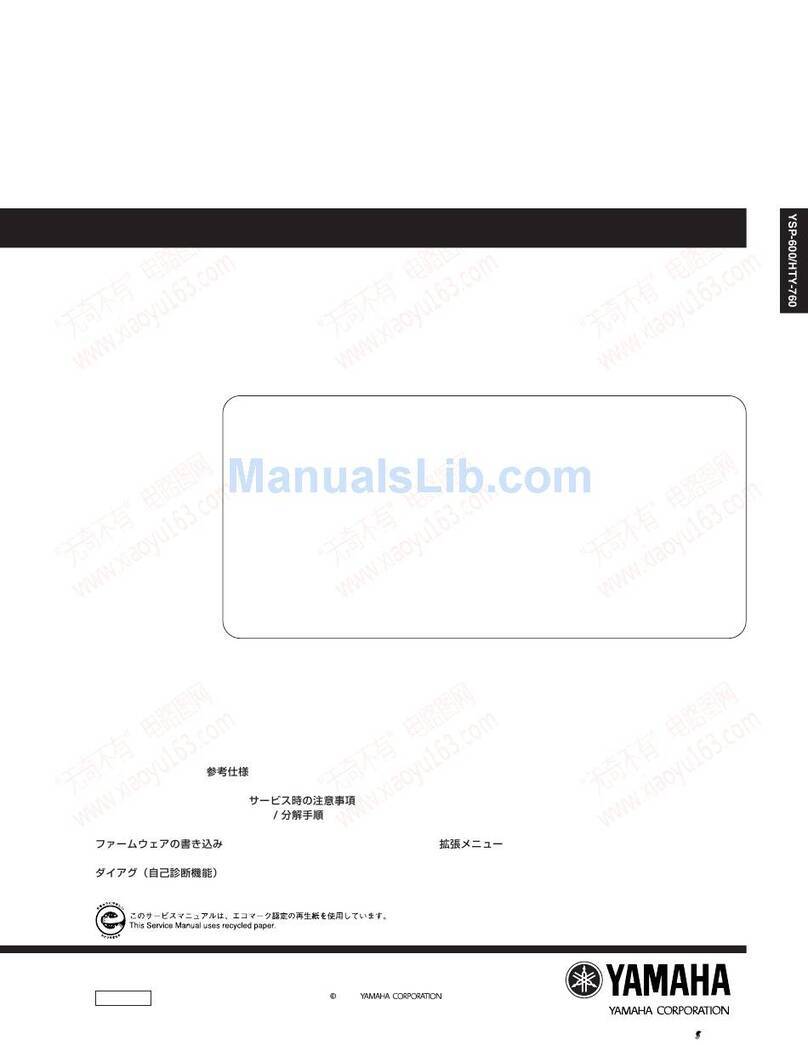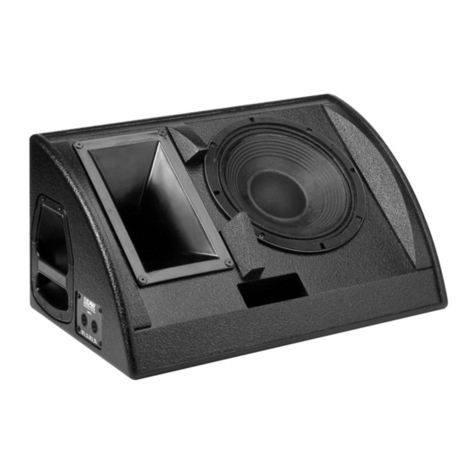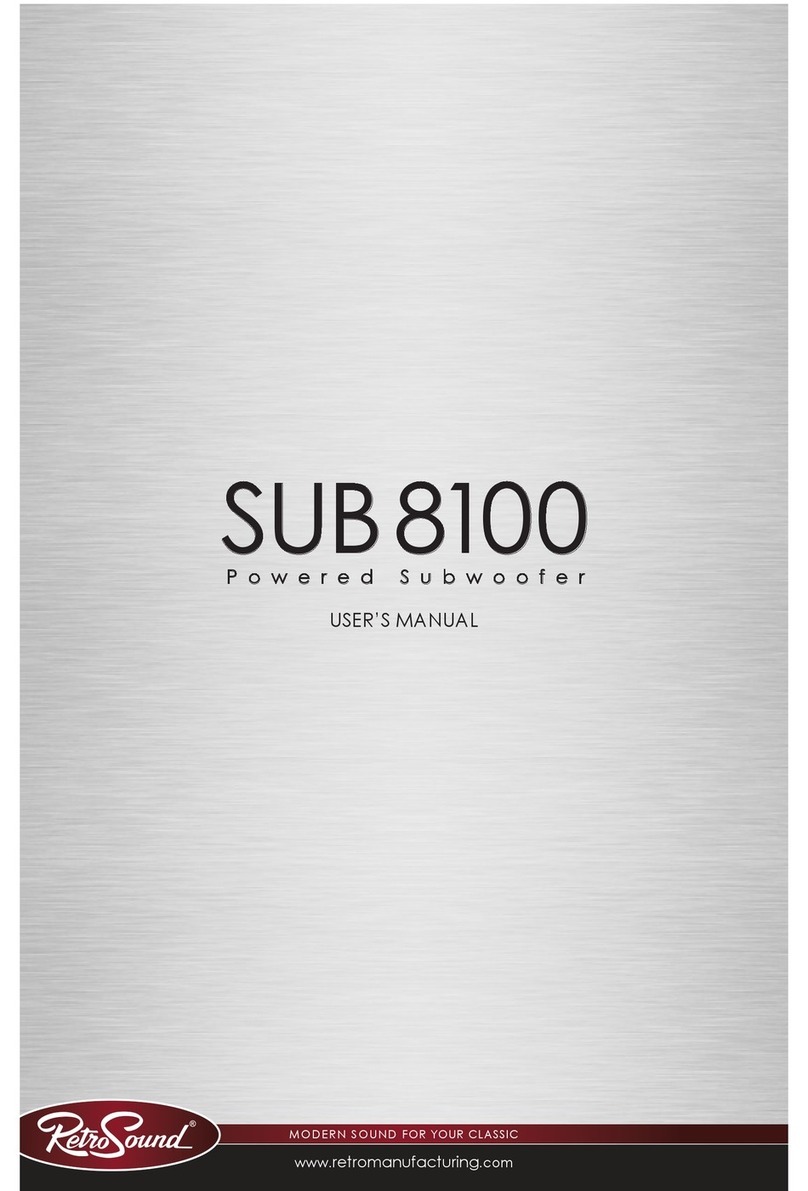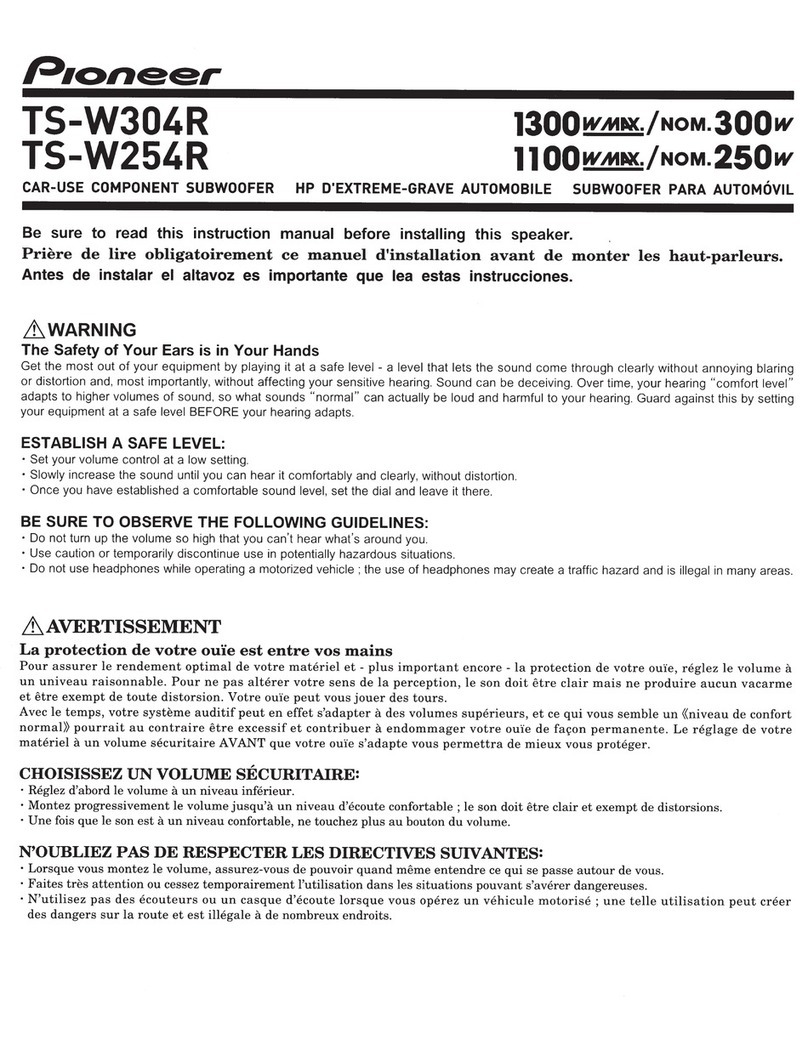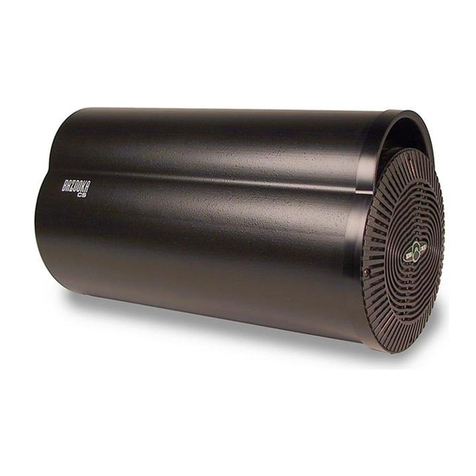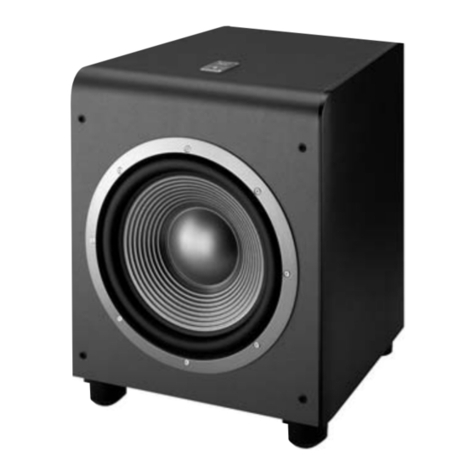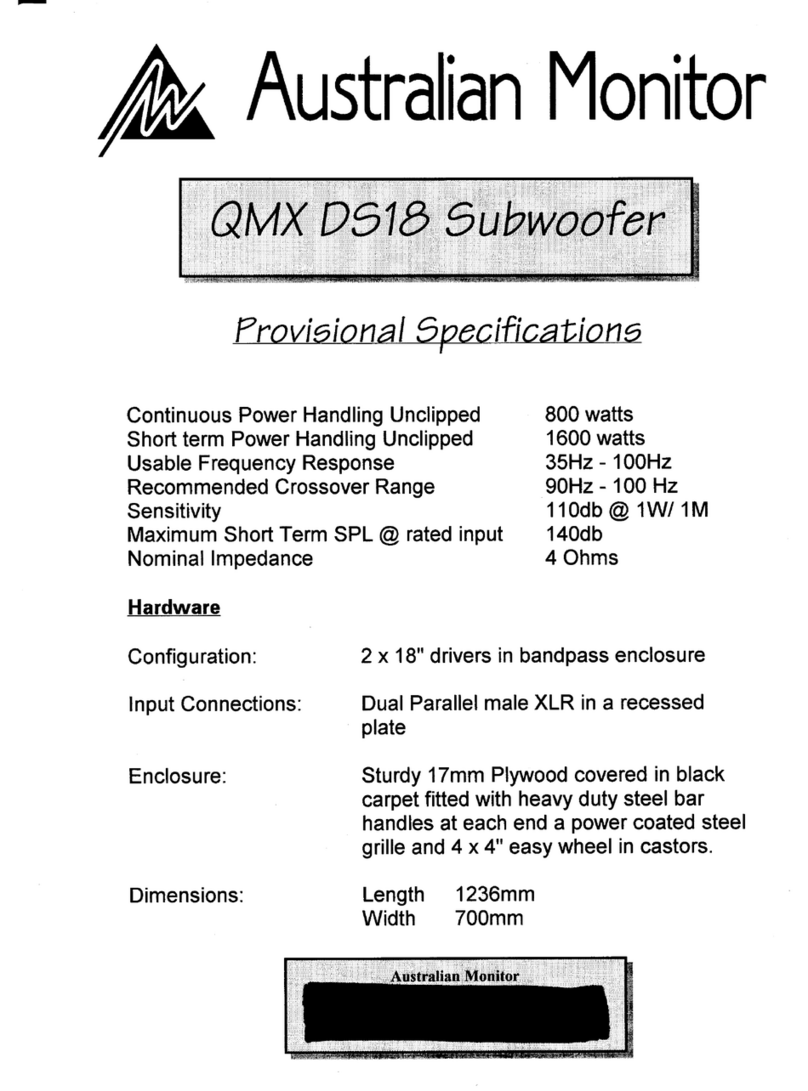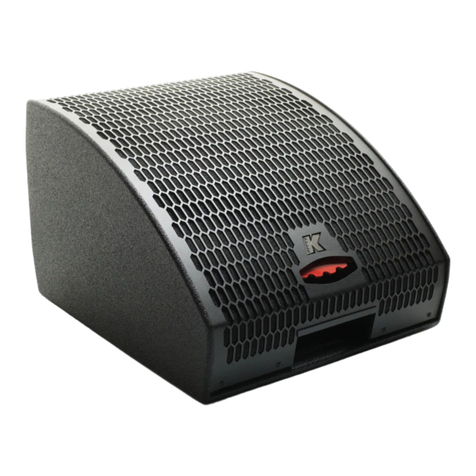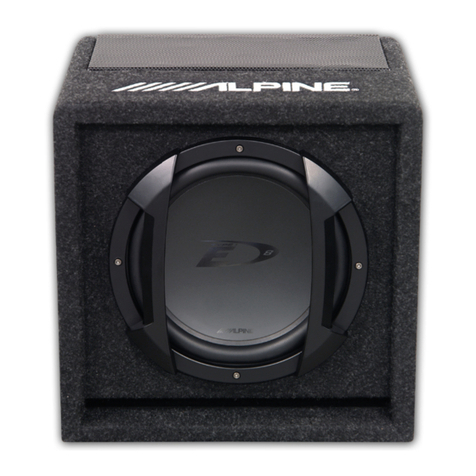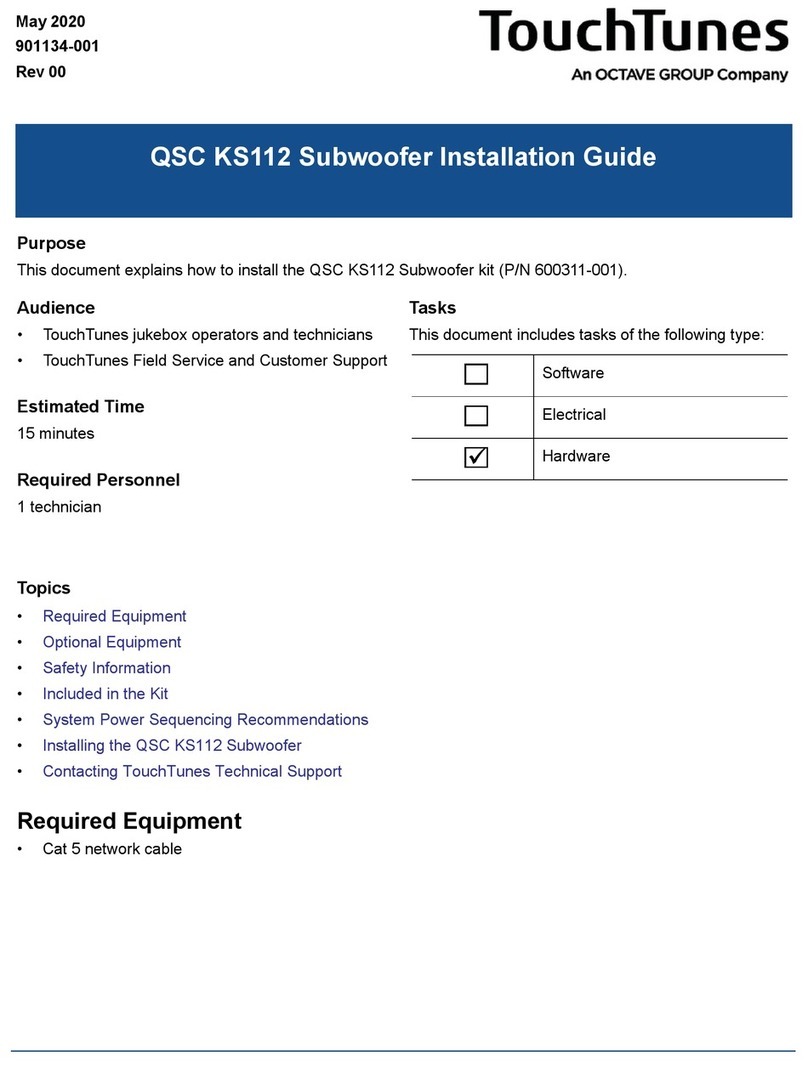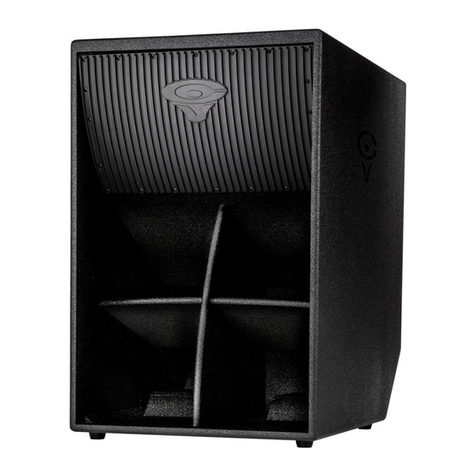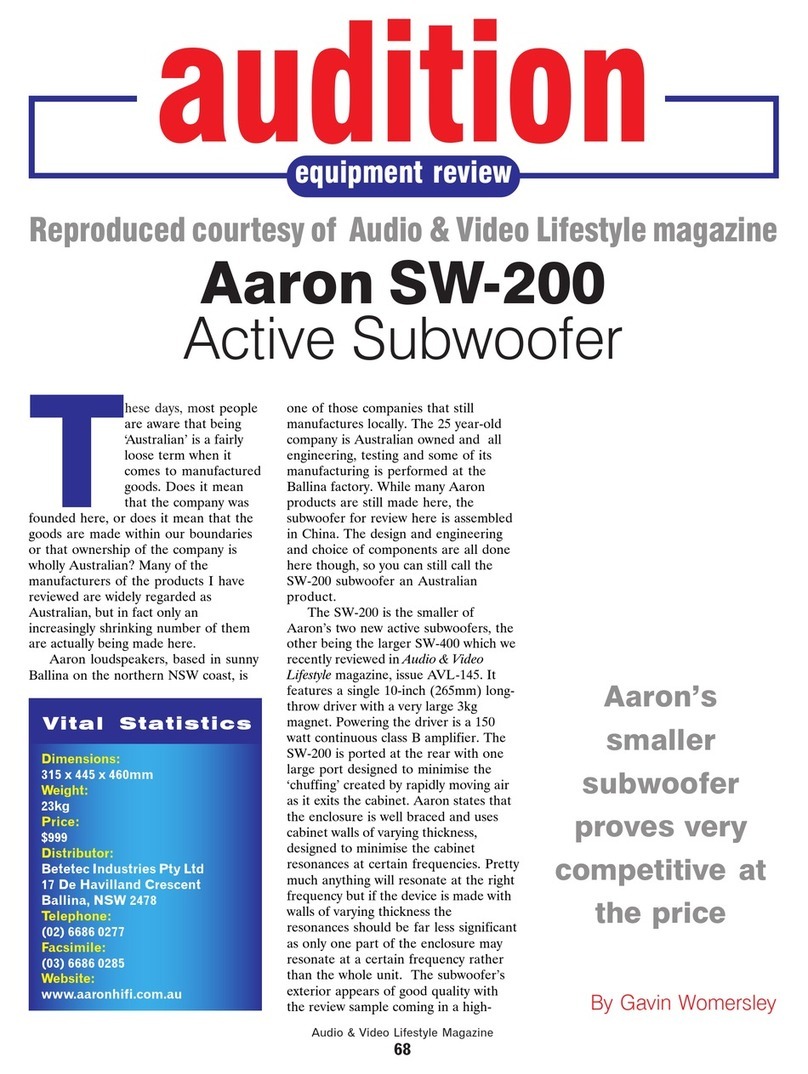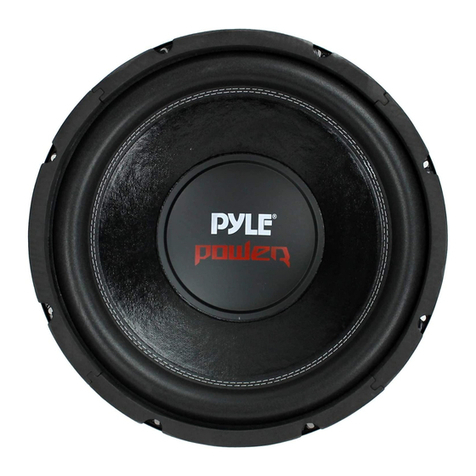DLS CLSUB2 User manual

CLASSIC SERIES
SUBWOOFERS
WELCOME
Thank you for buying a DLS CLASSIC subwoofer.
Thesubwoofermustbeinstalledcorrectlyinordertowork
well. This manual will show you how to install it like a pro.
Please read the entire manual before beginning the in-
stallation.
Install the subwoofer yourself if you feel confident with
ourinstructionsandifyouhavethepropertools. However
ifyoufeelunsure,turnovertheinstallationjobto someone
better suited to it.
Thespeakers are designedforenclosuremounting. When
installed"open air" the powerhandlingcapacity is reduced
with 30% from the nominal value. We dont recommend
”open air” installations except for OA10 and OA12 which
are designed for open air installations.
CONNECTION OF SUBWOOFER
How to connect depends on what type of amplifier you
use. The best is to follow the instructions given in the
manual for the amplifier. Most amplifiers today have built-
in lowpass crossover and possibilities to connect your
subwoofer in bridge mode.
Two4ohm subwoofersare oftenconnected instereomode
since most amplifiers can´t handle bridge mode loads
below 4 ohms. If you have a DLS Ultimate amplifier it´s
possibleto connect two 4 ohm subs in bridge mode, these
ampliers are 1 ohm stable.
We also recommend the use of a subsonic highpass fil-
ter. This gives a better bass reproduction with less
"rumble". In most DLS amplifiers this feature is already
built-in.
For wiring use high class speaker wires, minAWG13 (2.5
mm2). For example DLS SC 2x2,5.
Ifyou have anamplifierwithoutbuilt-in crossover youmust
usea passive crossover between amplifierandsubwoofer
like in this example:
Connected with a 12 dB passive low-pass x-over = 10
mHcoil inseriesand a bipolarcapacitorof 300 microFarad
in parallel. Crossover frequency is 95 Hz.
1234567
1
23456
7
1234567
L
+
-C
W308B, W310B,
W312B
OA10, OA12
SUBWOOFER ENCLOSURES, GENERAL
Build your enclosure in a stable and airtight material. The
best is MDF-board, 19 mm, or particle board, 22 mm.
Larger enclosures must have bracing inside to avoid
vibrations.Theenclosuremustbe completely airtight. Use
sealing compound in all joints, also around the cable
terminals.Thesizeoftheenclosureis decidedbythe spea-
ker data.
SEALED ENCLOSURES
Sealedenclosuresareeasy tobuild.Thesize is notcritical,
but it can´t be too small. The speaker data such as Fs,
Qts, Vas and X-max decides the size of the enclosure.
Large speakers need larger boxes.Two speakers need a
box of the double size etc. The enclosure must be
completely airtight.
A sealed enclosure should be filled with acoustic wool up
to 75 - 100%.
A sealed enclosure has a lower efficiency than vented
enclosures but they can handle high power and are easy
to build.
A subwoofer in a sealed enclosure creates a tight bass
suitable for the audiophiles listening to classical music,
jazz and soft rock. All the Classic subwoofers except for
OA12, are recommended NOT to use in sealed
enclosures.
VENTED ENCLOSURES
Aspeakerinaventedenclosure has a higher efficiency(3
dB) and higher power handling capacity than in a sealed
enclosure.In a vented enclosurethesoundfrom the spea-
ker and the port work together creating a higher sound
level.The sound from the port mustcomeout in the same
phase as from the speaker otherwise the result is bad.
The size of the vented enclosure is decided by the spea-
ker data just as for the sealed one.
The size of the vehicle often decides the practical size of
the enclosure.Asmaller enclosure has a higher resonant
frequency than the larger one. The size of the enclosure
shouldnotbeso big that the speaker plays below it´s own
free air resonance (Fs), then it looses in power handling
capacity.
The port does not have to be fully inside the enclosure as
long as the area and length are correct.
Sometimes you need two or more ports in an enclosure.
You can convert from one to two or more ports as long as
the total port area is the same.
BANDPASS ENCLOSURES
In all bandpass enclosures the speakers are hidden in-
side the enclosure, all sound is coming out through the
ports. There are different types of bandpass enclosures
and they have in common that they are a bit more difficult
tobuild.Mostof our subwoofers can be used in bandpass
enclosures

W308B W310B W312B
Size 20 cm (8") 25 cm (10") 30 cm (12")
Impedance 4 ohm 4 ohm 4 ohm
Nom. power (RMS) 100 W (max 150) 120 W (max 200) 150 W (max 250)
Freq. range 30 Hz - 2 kHz 25 Hz - 2 kHz 20 Hz - 2 kHz
Sensitivity 87,1 db 89 dB 91 dB
Voice coil diameter 50 mm (2”) 50 mm (2”) 50 mm (2”)
Voice coil height 22 mm (0,87”) 22 mm (0,87”) 22 mm (0,87”)
Re 3,1 ohm 3,4 ohm 3,3 ohm
Voice coil inductance, 1 kHz 1,5 mH 1,1 mH 1,1 mH
BL product 7,8 11,5 12,22
X-max +-5 mm (0,2”) +-5 mm (0,2”) +-5 mm (0,2”)
Suspension compliance CMS 478 349 317
SD- Effective piston area 214 cm2314,6 cm2452,3 cm2
Resonant freq. (Fs) 36,3 Hz 36 Hz 30 Hz
Vas (liters) 30,5 48,6 115
Vas (ft3) 1,08 1,72 4,06
Qms 3,55 2,49 3,26
Qes 0,45 0,32 0,36
Qts 0,40 0,28 0,34
Cone material Coated non-compress paper Coated non-compress paper Coated n-cp paper
Magnet weight 40 oz (1,13 kg) 40 oz (1,13 kg) 50 oz (1,42 kg)
Magnet diameter 4,7" (120 mm) 5,7" (145 mm) 6,14" (156 mm)
Installation depth 3,94" (100 mm) 4,4" (112 mm) 5,04" (128 mm)
Mounting hole 7,08" (180 mm) 8,86" (225 mm) 10,8" (274 mm)
Outer diameter 8,27" (210 mm) 10,08" (256 mm) 12,12" (308 mm)
Weigth 6,6 lb (3 kg) 8,38 lb (3,8 kg) 9,92 lb (4,5 kg)
TECHNICAL SPECIFICATIONS FOR DLS CLASSIC SUBWOOFERS
RECOMMENDED ENCLOSURES FOR W308B, W310B & W312B
W308B
Vb1 Vb2 port Vb2
8,02 4,93 1x6,8x33 cm
0,28 ft30,17 ft31x3"x13" (US)
F3 Vb1: 50 Hz, Vb2: 141,9 Hz
VENTED ENCLOSURE
Subwoofer Volume (liters/ft3) Port Damping F3 Fb
W308B vol: 18 / 0,64 3” x 30 cm/ 11,8” Line inside 45,9 Hz 45 Hz
W310B vol: 28,5 / 1,0 3” x 14 cm/5,5” Line inside 48,4 Hz 45,0 Hz
W312B vol: 41,6 / 1,47 4” x 32 cm/12,6” Line inside 47,1 Hz 40,2 Hz
SEALED ENCLOSURE
We don´t recommend the use of
sealed enclosures for these
subwoofers
The speaker is installed in Vb1
playing into chamber Vb2 where
the port(s) are installed.
F3 = approximative lower frequency for
vented boxes in Hz. Often called F-3 dB point
= the point where the power is 50% lower.
Fb = Box resonant frequency
SEALED BANDPASS
W310B
Vb1 Vb2 port Vb2
22,17 13,98 1x10,2x35,5 cm
0,78 ft30,49 ft31x4"x14" (US)
F3 Vb1: 40 Hz, Vb2: 118 Hz
W312B
Vb1 Vb2 port Vb2
32,84 37,23 2x10,2x19 cm
1,16 ft31,32 ft32 x 4" x 7,5" (US)
F3 Vb1: 45 Hz, Vb2: 99 Hz
Vb1=rear, Vb2=front
RUNNING-IN PERIOD
Allow the speaker to play for at least
15-20 hours. After this time the
performance is correct.

TECHNICAL SPECIFICATIONS FOR DLS CLASSIC SUBWOOFERS
OA10 OA12
Size 25 cm (10") 30 cm (12")
Impedance 4 ohm 4 ohm
Nom. power (RMS) 180 W (max 360) 210 W (max 400)
Freq. range 25 Hz- 2 kHz 20 Hz-2 kHz
Sensitivity 86,5 dB 88,4 db
Voice coil diameter 50 mm (2”) 50 mm (2”)
Voice coil height 34 mm (1,34”) 34 mm (1,34”)
Re 3,59 ohm 3,55 ohm
Voice coil inductance, 1 kHz 1,72 mH 1,79 mH
BL product 11,96 12,53
X-max +-9 mm (0,35”) +-9 mm (0,35”)
Suspension compliance CMS 183 167
SD- Effective piston area 314,6 cm2452,3 cm2
Resonant freq. (Fs) 39,9 Hz 37,8 Hz
Vas (liters) 25,5 48
Vas (ft3) 0,6 1,69
Qms 3,19 3,47
Qes 0,55 0,57
Qts 0,47 0,49
Cone material Coated non-compressed paper Coated non-compressed paper
Magnet weight 80 oz (2,27 kg) 80 oz (2,27 kg)
Magnet diameter 5,71" (145 mm) 5,71" (145 mm)
Installation depth 5,35" (136 mm) 6" (153 mm)
Mounting hole 9,37" (238 mm) 11,10" (282 mm)
Outer diameter 10,55" (268 mm) 12,28" (312 mm)
Weigth 11,68 lb (5,3 kg) 12,35 lb (5,6 kg)
RECOMMENDED ENCLOSURES FOR OA10 & OA12
VENTED ENCLOSURE
Subwoofer Volume (liters/ft3) Port Damping F3 Fb
OA10 vol: 29 / 1,02 3” x 28 cm/11” Line inside 34,7 Hz 35,0 Hz
OA12 use sealed enclosure
SEALED ENCLOSURE
SEALED BANDPASS
OA10
Vb1 Vb2 Port Vb2
11,96 13,35 1x10,2x46 cm
0,42 ft30,47 ft31x4"x18,1" (US)
F3 Vb1: 42,9 Hz, Vb2: 102,1 Hz
OA12
Vb1 Vb2 Port Vb2
31,68 52,88 3x10,2cm x21 cm
1,12 ft31,87 ft33 x 4" x 8,26" (US)
F3 Vb1: 48,2 Hz, Vb2: 89,6 Hz
Vb1=rear, Vb2=front OA10: use vented enclosure
OA 12 sealed enclosure:
39 liters / 1,38 ft3
F3: 49,4 Hz
or if you want a smaller box:
27 liters / 0,95 ft3
The speaker is installed in Vb1
playing into chamber Vb2 where
the port(s) are installed.
F3 = approximative lower frequency for
vented boxes in Hz. Often called F-3 dB point
= the point where the power is 50% lower.
Fb = Box resonant frequency
OA10 & OA12 subwoofers
are designed for open air use
but can also be used in these
enclosures.

HINTS & TIPS FOR ”DO IT YOURSELF” ENCLOSURE BUILDERS
DLS Svenska AB
P.O. Box 13029
SE-40251 Göteborg, Sweden
Tel: +46 31 840060
Fax: +46 31 844021
E-mail: [email protected]
www.dls.se
Technical Assistance
For technical assistance ask the shop where the product
was sold or the distributor in your very country.You can
always phone the DLS Helpdesk in Sweden + 46 31
Informationcan alsobe foundonour WEB-sitewww.dls.se
We follow a policy of continuous advancement in
development. For this reason all or part of specifications
& designs may be changed without prior notice.
WARRANTY SERVICE
This speaker is covered by warranty, depending on the
conditions in the country where it is sold. If the speaker is
returned for service, please include the original dated
receipt with the product.
ABOUT THE RECOMMENDED ENCLOSURES
The performance of these recommended enclosures will
vay from vehicle to vehicle. It is more difficult to get a tight
and well defined bass in a SEDAN vehicle because of the
tightness between trunk and interior of the vehicle. In this
case a bandpass box could be a better choise.
- All volumes are inside measures.
- Volumes occupied by speaker and ports have already
been added to the given enclosure volumes.
- Use conical bass ports for best result. (DLS BP-75 or
BP-110). If the ports are too long for the box you can use
abend.Eithercutthetubeandglueittogether in angle, or
usefactory made tube bends. It´s easier to use the factory
made ones. The total length must be the same as for a
straight tube. Make the measure in the center of the tube.
The port opening inside the enclosure must not be closer
to an interior wall than 3” (75 mm), otherwise it will have
negative effects on the airflow.
- The enclosure must be very steady and completely air-
tight. Use 22 mm particle board or 19 mm MDF-board.
The particle board has a self resonant frequency of 14 Hz
while the MDF has a resonant frequency of approx. 400
Hz. It´s important to do some type of bracing inside the
enclosure to avoid vibrations.
Volume taken up by bracing should be added to the
enclosure volumes.
ENCLOSURE DAMPING
Most enclosures should be damped inside with syntetic
(acoustic)woolordampingmat(line).Attach the damping
materialonthewall opposite from the speaker and port.A
sealed enclosure should be filled up to 70-100% with
acoustic wool.
In a vented enclosure the speaker and port should be on
the same side, otherwise a fade-out of some frequencies
can occour. In most vehicles, except for SEDAN cars, the
speaker and port should be directed backwards for best
result.
ENCLOSURE PLACING IN DIFFERENT TYPES OF
VEHICLES
In small vehicles like VW Golf, Peugeot 306 and similar
the bass box should be installed with both speaker and
port directed backwards.Alternatively booth speaker and
port can be directed upwards. This way of mounting is
valid for all types of vehicles where the trunk is
incorporated with the inner compartment.
In sedan vehicles with the passenger compartment
separatedfrom thetrunk,the enclosureshouldbe installed
withbooth speakerandport directedtowardsthe rearseat.
Some cars have an opening in the middle of the rear seat
for loading skis etc. You can install the enclosure behind
this opening and direct speaker or port through this
opening. There must be some free space in front of the
port, (between the rear seat and the port opening).
In large vehicles like station wagons the best sound is
achievedwiththeenclosureinstalled behind the rear seat
with booth speaker and port directed backwards.
Alternatively you can install the enclosure on one side of
the luggage compartment.
CALCULATE YOUR ENCLOSURE
Box volumes:
When caculating the volume of an enclosure you simply
multiply the width (W) x heigth (H) x depth (D).
Use measures in dm and you will get the answer in liters.
A trapezoid box is calulated as below:
Vol=width (W) x heigth (H) x upper depth(UD) + lower depth(LD)
2
THE SUBWOOFER
Be sure to measure the
inside dimensions.
upper
suspension
voice coil pole plate
magnet
spider
chassis dust cap
speaker cone
T-yoke
W
H
UD
LD
This manual suits for next models
5
Other DLS Subwoofer manuals
